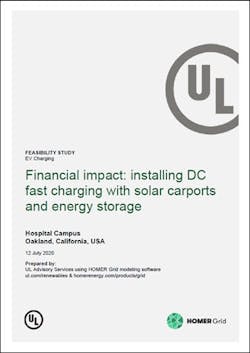UL Advisory Services conducted a feasibility study using HOMER Grid modeling software to analyze the techno-economic impact of deploying carport based solar + energy storage for a Medical/Hospital Center located in California. The primary objectives were to gain clarity on the impacts of EV charging, design the most economic renewable energy system to meet the energy requirements and to supplement the utility, and to offset the increasing cost of electricity.
In this analysis, UL determined the cost of energy by creating new load profiles using HOMER’s ‘On-Demand’ charging and the ‘Smart’ charging design tools to simulate the loads as a result of charging the ambulances and to use HOMER Grid to model how different tariff rates impact the economics.
In collaborating with the client, UL performed system simulations of several configurations and technology platforms based on the client’s current and future plans. The team then optimized the configurations and architecture to maximize incentives and tariff rate analysis before finalizing the financial analytics to show the potential reduction in utility expenses and increase in cash-on-cash return on investment.
With solar PV and energy storage, the campus can expect to save $321,431 in energy in the first year 26% in kWh energy consumption), with a 6.3-year payback and cash-on-cash return of 15.7% with a net upfront investment of $2,471,158.
